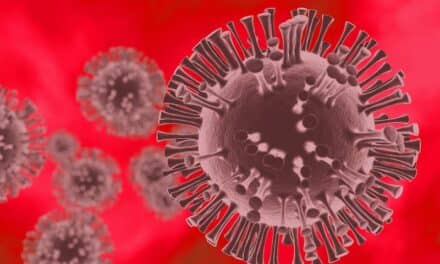Due to public health issues like the opioid crisis and the global SARS-CoV-2 pandemic, cities have turned to new technologies to better understand the risks to their communities. One of these technologies is wastewater-based epidemiology (WBE), an emerging field that can track the types of chemicals and viruses in sewers as a public data tool for municipality-wide public health and safety policies and interventions.
A unique partnership between the City of Tempe, Ariz., and Arizona State University first employed this technology to track opioid use in May 2018, and display results through an open access dashboard to provide the public, fire departments, and first responders with actionable data to inform implementation of interventions. With the logistics and infrastructure for population health monitoring in wastewater already in place, the City of Tempe and ASU were able to rapidly pivot to detecting SARS-CoV-2 in wastewater in April 2020 during the onset of the pandemic.
Benefits of Wastewater Science
In Tempe, wastewater data is used in conjunction with other data such as county and state data on vaccines and test results, accessibility to health services, and more.
“Wastewater science is a valuable tool for our city. The data helps us in determining where to set up clinics, intensify community outreach and adjust first responder operations,” says Wydale Holmes, interim director of the Tempe Strategic Management and Innovation Office. “Our partner with ASU and the trust from our community made this innovation possible.
Now, the complete data results are in for the first largest waves of the pandemic (from April 2020 through March of 2021). These data showcase the power of wastewater diagnostics as an early warning signal of health threats such as SARS-CoV-2 to a community. WBE was shown to reliably predict the occurrence of SARS-CoV-2 levels in city ZIP codes and sub-ZIP-code communities from 6 up to 11 days ahead of clinical testing results in some regions, while also providing an advanced warning to area hospitals and health care centers of upcoming surges up to 16 days in advance.
“Data demonstrate that the monitoring of wastewater provides an early-warning capacity of over two weeks, thereby aiding in the confident prediction of future clinical caseloads, morbidity and mortality in our city and campus communities,” says ASU professor Rolf Halden. “The early-warning capacity of wastewater monitoring decreases, once random clinical testing of individuals has been put in place, but the screening of individuals with conventional medical tools comes at a 60-fold higher price point than WBE, as our team demonstrated earlier this year. Thus, this latest study looking at all data collected over the course of the pandemic again highlights the power of wastewater monitoring as a nimble, practical, and very economic health monitoring tool whose benefits extend to vulnerable populations of lesser economic means.”
Samples were collected three days a week. A total of 1,556 wastewater samples were collected across the 11 sample sites in the Greater Tempe area. Most locations showed two waves in viral levels peaking in June 2020, and December 2020 to January 2021. WBE revealed a maximum concentration of 37.6 million gene copies of SARS-CoV-2 per liter of wastewater. This measurement obtained during peak pandemic conditions occurred at a Tempe hospital location, which had an active COVID-19 ward at the time of collection on Jan 11, 2021.
In addition, the amounts of SARS-CoV-2 detected in sewers also correlated with the number of positive cases determined by clinical testing. WBE has the potential to supplement and enrich clinical data and demographic information not only from a city, but down to the zip-code and neighborhood level.
Lastly, during the initial lockdown from May to early June 2020, the wastewater-informed data dashboard revealed remarkably elevated virus concentrations in the Town of Guadalupe beginning the week of May 11, 2020, to the week of June 8, 2020. This later decreased after prompt interventions such as face-mask mandates and community education in town halls beginning in June 2020.
“In collaboration with the city of Tempe, our team was able to showcase WBE as a platform technology that can rapidly be adapted from monitoring chemical indicators of public health concern, such as opioid overuse, and to tracking infectious disease threats, such as SARS-CoV-2,” says Erin Driver, PhD, who along with Devin Bowes, PhD, lead the data collection and analysis efforts for the municipal-academic collaborating team.
Having successfully deployed WBE for the opioid crisis and the pandemic, the City of Tempe and ASU are uniquely poised for continued use of WBE to spot and identify the next public health threat early on before it has a chance to overwhelm health care capacity.
“Among the greatest benefits of WBE is the early detection of disease outbreaks in situations where a substantial health-care response has not yet been mounted and in situations when clinical testing sites and equipment are scarce, vaccination campaigns are delayed, testing fatigue has set in, or widespread use of at-home rapid tests obscures the true level of high infection in affected communities,” Halden summarizes, adding that “WBE also holds promise for tackling other public health challenges such as obesity, diabetes and cancer linked to environmental toxic exposures.”
“There is so much more we can do with wastewater science. Tempe is known to be an innovative community and ASU is the most innovative university in the nation. Together, we are creating the blueprint for how communities around the world can benefit from this science,” Holmes says.
Featured image: Field sampling with City of Tempe personnel. Photo: Devin Bowes, PhD, Arizona State University





